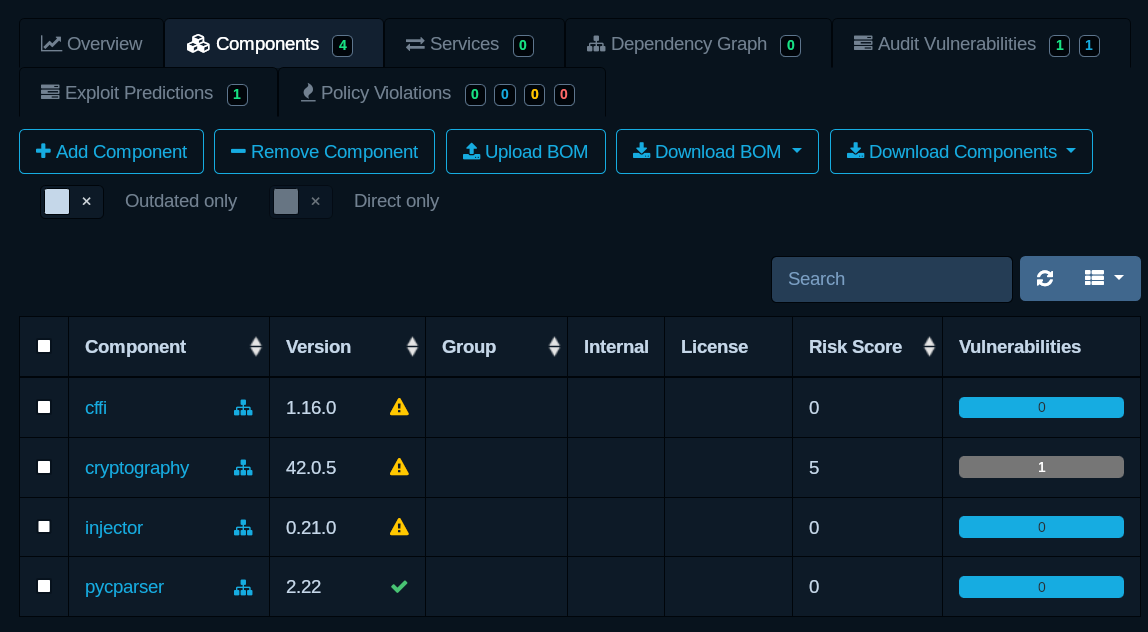Dependencies
Avoid typo-squatting
A common tactic for distributing malicious package is to register a package with a similar name to another popular package, and hope people mistype the package name. A way to avoid this issue is to check download count before adding a package to your project.
I therefore recommend either copy-paste package name from the official documentation. Or search for the package on the repository site for your programming language.
Unfortunately, not all package repository makes this super easy.
NPM
Just look at “Weekly downloads” on the panel to the right.
PyPI
https://pypi.org/ doesn’t show download stats. Instead, there are several other sites that provide it such as https://pypistats.org/.
Maven
I don’t know. Please tell me if you know.
NuGet
https://www.nuget.org/ shows download numbers directly in the search results.
Scan dependencies
The projects you work on likely have some dependencies, and those dependencies have other dependencies. All that quickly adds up.
New vulnerabilities are often discovered in open source packages. It is important that you are able to tell if a discovered vulnerability affects your project and take action quickly.
Manually looking at vulnerabilities lists and comparing with dependencies for all your project is a hassle and unfeasible for most.
Luckily there are tools out there to automate this process.
Node (Scan)
This is very simple, since it is build in to the package manager.
Scan
npm audit
Fix
npm audit --fix
Python (Scan)
For Python packages we need to install a tool. I strongly recommend using a virtual environment to install packages for your Python projects.
Make sure you have the venv for activated for your project.
pip install pip-audit
Scan
To scan your local environment.
python -m pip_audit -l
To scan requirements.txt.
python -m pip_audit -r requirements.txt
Fix issues
python -m pip_audit -r requirements.txt --fix
.NET (Scan)
Scan
dotnet list package --vulnerable --include-transitive
Fix
There is no command built-in to just update vulnerable packages. What you can do instead is to upgrade all outdated dependencies.
dotnet tool install --global dotnet-outdated-tool
dotnet outdated --upgrade
Java (Scan)
Unfortunately a vulnerability isn’t built-in. But, you can fairly easily add one as a plugin.
Maven
Add to pom.xml
<plugin>
<groupId>org.owasp</groupId>
<artifactId>dependency-check-maven</artifactId>
<version>11.0.0</version> <!-- Change to latest version -->
<executions>
<execution>
<goals>
<goal>check</goal>
</goals>
</execution>
</executions>
</plugin>
mvn verify
Gradle
Add to build.gradle
plugins {
id 'org.owasp.dependencycheck' version '11.0.0' // Change to latest version
}
./gradlew dependencyCheckAnalyze
Software Bill of Materials (SBOM)
npm (SBOM)
npm sbom --sbom-type application --sbom-format cyclonedx --legacy-peer-deps > bom.json
.NET (SBOM)
dotnet tool install --global CycloneDX
dotnet-CycloneDX --set-type Application --output-format json Project.csproj
Python (SBOM)
CycloneDX can be used to. It is a dependency of pip-audit, but can also be installed alone with:
pip install cyclonedx-bom
It can generate SBOM from requirements.txt with:
python3 -m cyclonedx_py requirements
See CycloneDX Python SBOM Generation Tool
Analyze SBOM
A tool like Dependency-Track can be used to analyze SBOM.
# Downloads the latest Docker Compose file
curl -LO https://dependencytrack.org/docker-compose.yml
# Starts the stack using Docker Compose
docker compose up -d
Login
- Username: admin
- Password: admin
Analyze
- Create a project
- Go to “Components” tab for the project and upload the SBOM
- Refresh and inspect the results

Vulnerability sources
GitHub Advisory:
Go to “Administration” -> “GitHub Advisories” and insert your personal access token.
Google OSV Advisory
Go to “Administration” -> “Google OSV Advisories (Beta)”, under “Ecosystem” add npm, NuGet, PyPi or whatever sources of dependencies are used in your project.